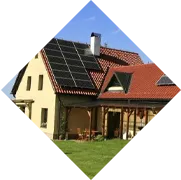solar panel types and efficiency
Understanding Solar Panel Types and Efficiency
Solar energy has gained prominence as a renewable energy source due to its ability to reduce carbon emissions and reliance on fossil fuels. As technology advances, various types of solar panels have been developed, each with its unique efficiency levels, applications, and advantages. Understanding these types and their efficiency can help consumers make informed choices about solar energy for their homes or businesses.
Types of Solar Panels
1. Monocrystalline Solar Panels Monocrystalline panels are made from a single crystal structure of silicon, which is why they are characterized by their uniform dark color and rounded edges. They are known for their high efficiency, typically ranging from 15% to 22%. This efficiency means that they can produce more power than other types of panels in smaller spaces, making them ideal for residential rooftops where space may be limited. Additionally, they tend to have a longer lifespan, often exceeding 25 years, due to their high-quality construction.
2. Polycrystalline Solar Panels In contrast, polycrystalline panels are made from multiple silicon crystals melted together. This gives them a speckled blue hue and makes them less efficient than monocrystalline panels, with efficiencies typically ranging from 13% to 16%. While they usually cost less to produce, the trade-off is that they require more space to generate the same amount of electricity. However, polycrystalline panels are still a popular choice due to their affordability and decent performance, particularly in areas with ample sunlight.
3. Thin-Film Solar Panels Thin-film solar panels are made by layering photovoltaic materials on a substrate. They are lightweight, flexible, and can be incorporated into a variety of surfaces, including building materials. However, their efficiency is generally lower, ranging from 10% to 12%. Despite this, they perform better in low-light conditions and high temperatures compared to silicon-based panels. This makes them suitable for specific applications, such as on buildings where traditional panels might not be viable.
4. Bifacial Solar Panels Bifacial panels can capture sunlight on both sides, significantly increasing their energy yield. By reflecting light from surfaces beneath them (like the ground or rooftops), they can gain additional energy, which can boost total efficiency beyond that of standard panels. While they can be more expensive upfront, their increased output can lead to a higher return on investment in the long run.
solar panel types and efficiency

5. Building-Integrated Photovoltaics (BIPV) BIPV systems integrate solar cells into building materials, such as windows and roofs. They are aesthetically pleasing and can effectively replace conventional building products. The efficiency of BIPV systems can vary widely, but they often fall in the range of standard solar panels. Their adoption promotes energy-efficient building design.
Efficiency Factors
Several factors affect the efficiency of solar panels beyond their type, including
- Temperature High temperatures can reduce the efficiency of solar panels, particularly for silicon-based ones. Monitoring and designing installations that mitigate heat buildup can enhance performance. - Orientation and Angle The positioning of solar panels significantly affects their exposure to sunlight. Panels installed at the optimal angle and orientation relative to the sun can produce more energy. - Shading Even partial shading from trees or buildings can lead to significant energy loss. Planning for installations that have unobstructed access to sunlight is crucial.
Conclusion
Choosing the right type of solar panel involves considering factors such as efficiency, cost, available space, and specific energy needs. Monocrystalline panels are excellent for those with limited space and higher budgets, while polycrystalline panels offer a cost-effective option for larger installations. Thin-film panels provide flexibility, and bifacial panels can maximize energy generation in specific configurations. Understanding these types and their efficiency will empower consumers to harness solar energy effectively, contributing to a more sustainable future. As technology continues to advance, we can expect even more improvements in solar panel efficiency and applications, further propelling our transition into renewable energy.
-
Understanding the Advantages of Solar String Inverters for Your Energy SystemNewsApr.29,2025
-
Choosing the Right PV Inverter: A Comprehensive GuideNewsApr.29,2025
-
The Future of Solar Power: Exploring Bifacial Solar PanelsNewsApr.29,2025
-
The Complete Guide to Solar Panels: Efficiency, Cost, And InstallationNewsApr.29,2025
-
The Best Options for Efficiency and Cost-EffectivenessNewsApr.29,2025
-
Harnessing the Power of Off-Grid Solar Inverters for Energy IndependenceNewsApr.29,2025







